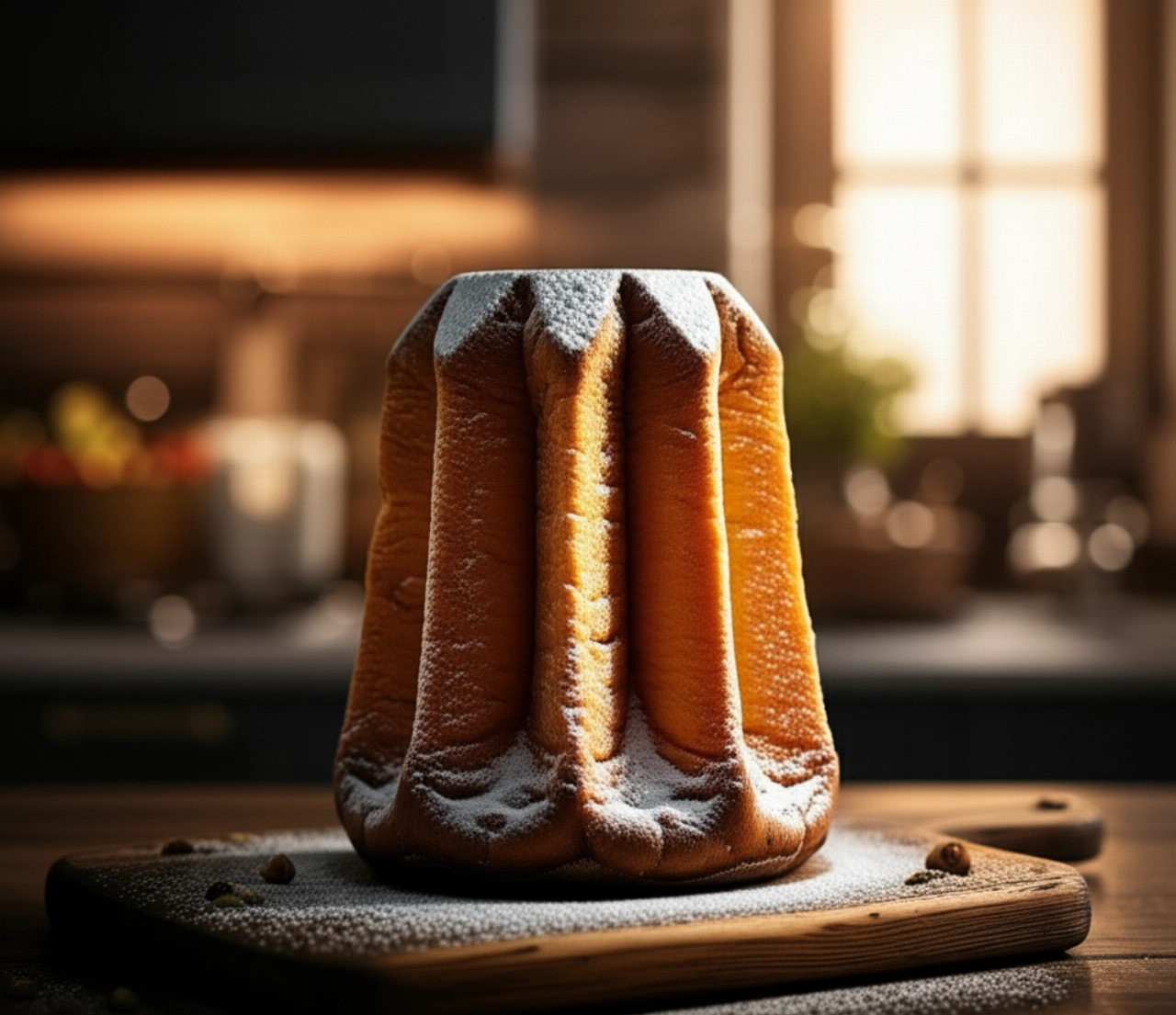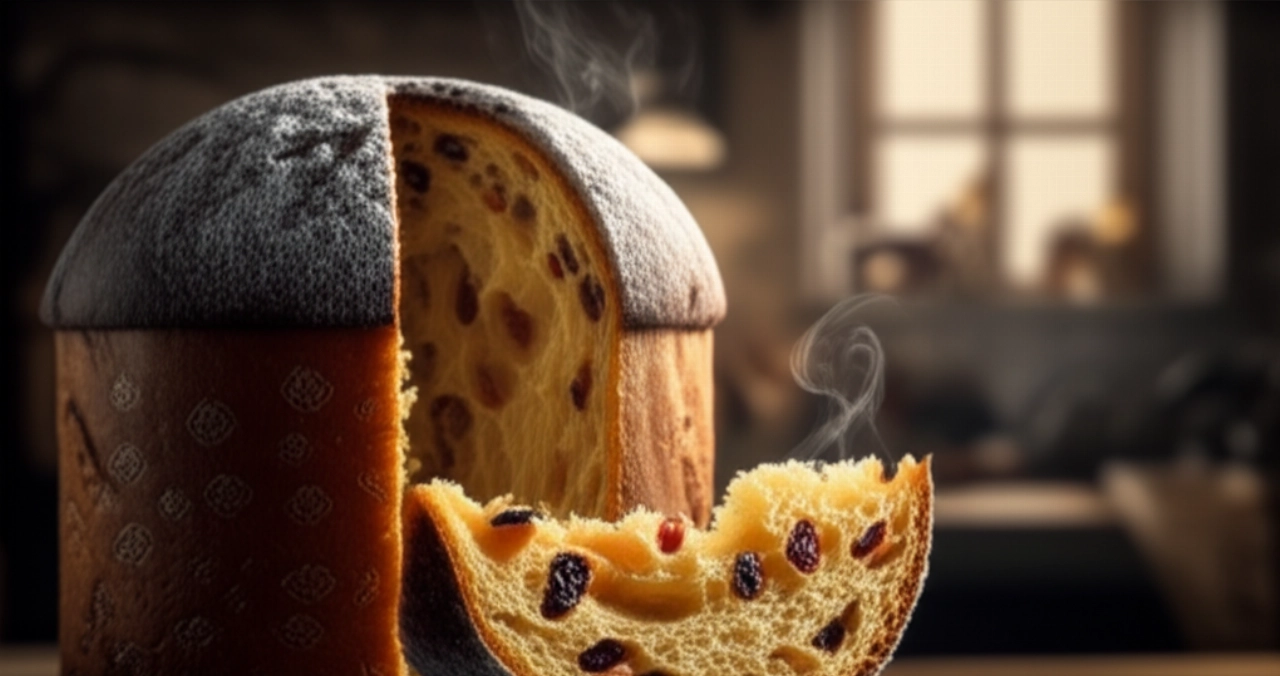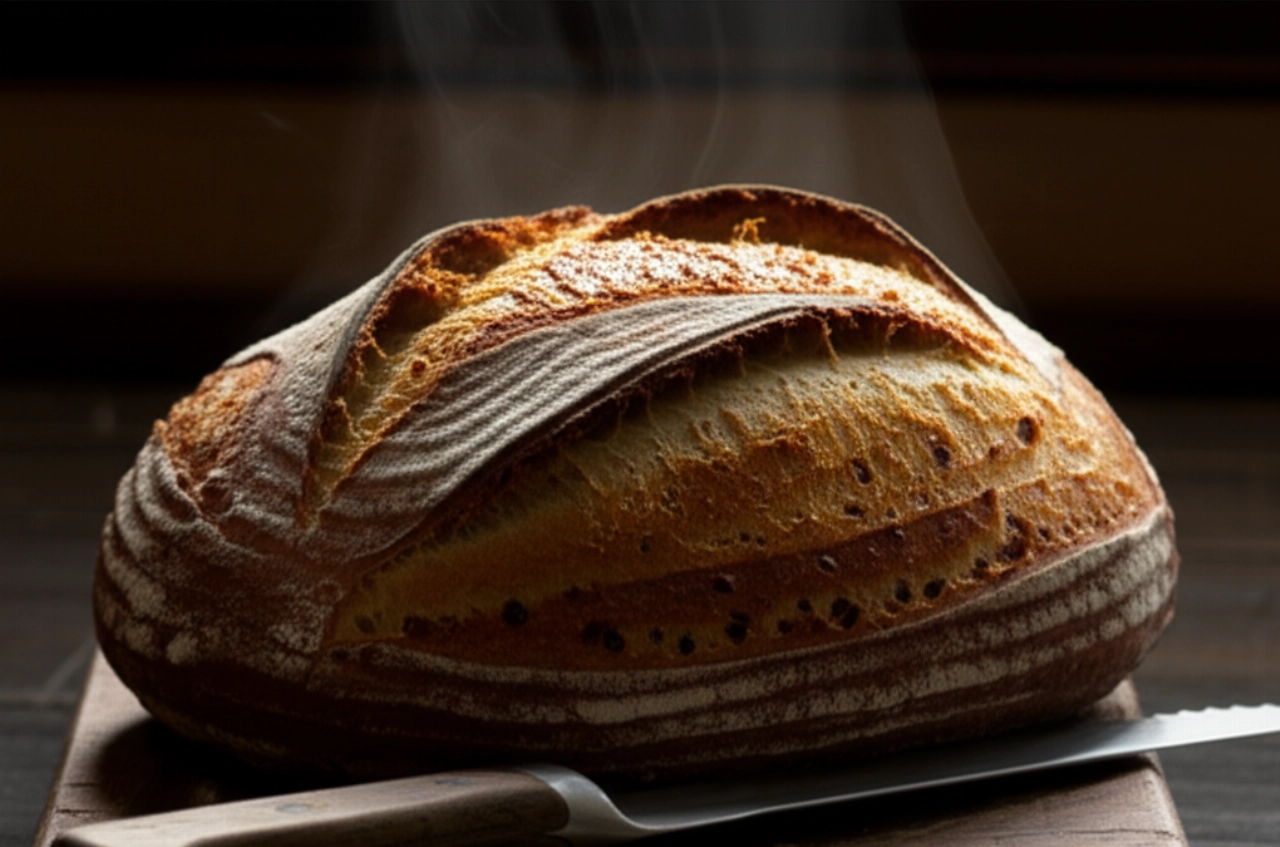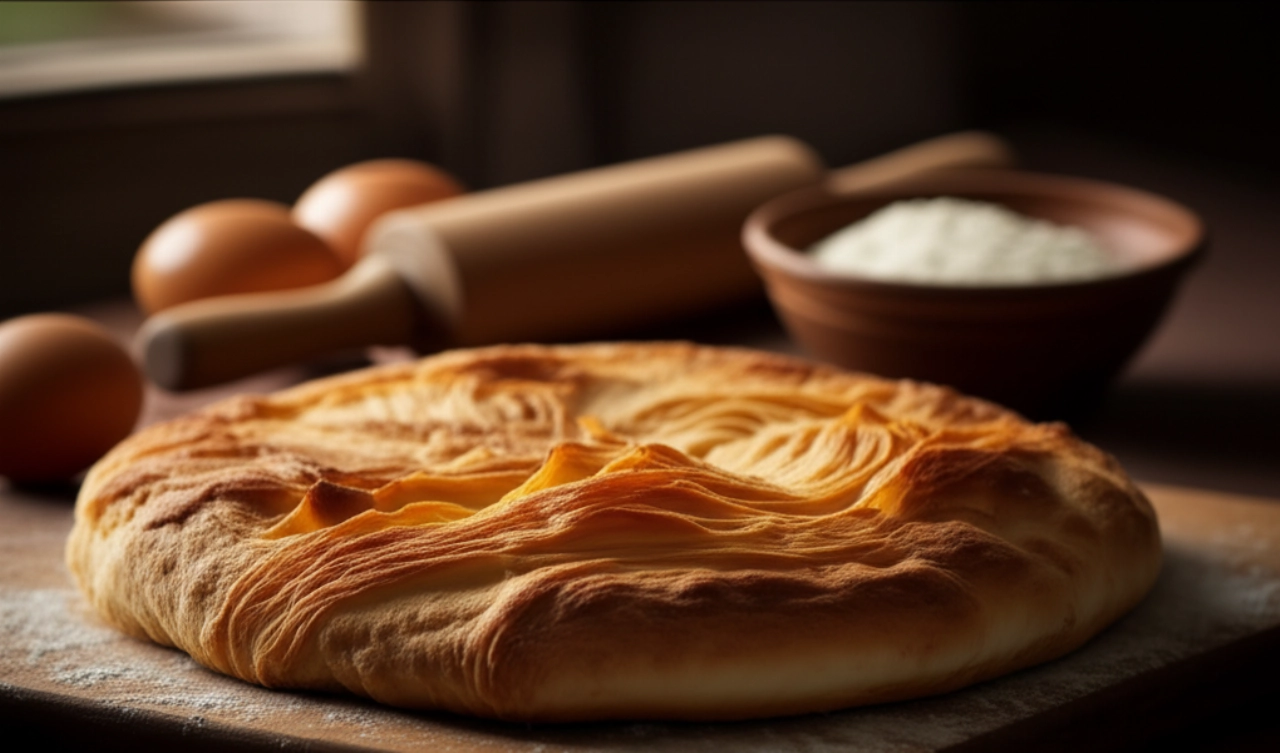Dreaming of bringing a homemade Verona Pandoro to your table, so soft it melts in your mouth, with that intoxicating scent of butter and vanilla filling your home? Imagine the wonder and applause of your loved ones when they taste this marvel, a symbol of the holidays.
Too often, however, homemade Pandoro seems like a titanic undertaking: doughs that don't rise, dry or heavy results, and the fear of wasting precious time and ingredients. Finding the right recipe, one that guarantees success, can seem like a mirage.
Make yourself comfortable. On this page, you won't just find a list of ingredients, but the definitive guide, full of tips and tricks, to prepare the softest and most fragrant Verona Pandoro of your life. Success is guaranteed, and your holiday table will be unforgettable. I will guide you step by step to obtain an incredibly light Pandoro with that perfect honeycomb structure that only the original can provide, overcoming any fear of long proofing and complexity.

Smart Ingredients for a Dream Pandoro: The Choice That Makes a Difference
Every great masterpiece begins with the quality of its elements. For Pandoro, the choice of ingredients is not a detail, but the first step towards success. Here's what you need and why:
- Manitoba Flour (or Strong Flour): It's the base of our softness. This gluten-rich flour is essential for creating a robust and elastic gluten network, capable of "trapping" the air produced by leavening, ensuring the typical honeycomb structure and lightness of Pandoro. Don't settle for just any flour!
- High-Quality Butter (Cold and Pomade): Butter is the soul of Pandoro. Choose dairy butter with a high fat percentage and an intense aroma. We will use it in two different consistencies: cold for the first dough and "pomade" (soft but not melted) for the final incorporation, for an unmistakable creaminess and aroma.
- Very Fresh Eggs (Room Temperature): Eggs add richness, color, and moisture to the dough. It's crucial that they are at room temperature to blend perfectly with the other ingredients, avoiding thermal shocks that could compromise leavening.
- Fresh Brewer's Yeast (or Sourdough Starter): The engine of our leavening. If you use brewer's yeast, make sure it's very fresh and active. If you are an expert and have sourdough starter, your Pandoro will have an even greater aroma and shelf life, but the recipe is designed to be foolproof even with brewer's yeast.
- Sugar, Salt, Vanilla, and Natural Flavorings: Sugar feeds the yeast and adds sweetness. A pinch of salt balances the flavors. Vanilla (preferably the seeds of a pod) and natural flavorings (untreated lemon or orange zest) will give that enveloping aroma that makes Pandoro so special.

3 Common Mistakes in Homemade Pandoro (and How to Avoid Them)
No one is born knowing everything, and even the greatest chefs have made mistakes. Knowing the pitfalls will allow you to avoid them and achieve perfection on your first try:
- Haste is the Enemy of Softness: Pandoro is a dessert that requires patience. The biggest mistake is wanting to speed up the proofing times. If the dough doesn't double (or triple, depending on the phase) within the indicated times, don't force it. Leave it in its warm, humid environment until it's ready. Insufficient proofing leads to a heavy and poorly aerated Pandoro.
- Imperfect Gluten Development (Incordatura): Pandoro dough must be worked for a long time until it reaches the so-called "incordatura" (gluten development). This means that the gluten network is well developed, the dough is elastic, smooth, detaches from the sides of the bowl, and if gently stretched, forms a thin veil without breaking. Weak gluten development will not be able to support the butter and eggs, and the Pandoro will be gummy or poorly developed. Don't be afraid to knead for a long time!
- Wrong Temperatures: Both the ingredients and the proofing environment must be at the right temperature. Ingredients that are too cold slow down yeast activity. An environment that is too cold blocks proofing, while one that is too hot accelerates it excessively, compromising the structure. Maintain the temperatures indicated in the recipe for optimal results.
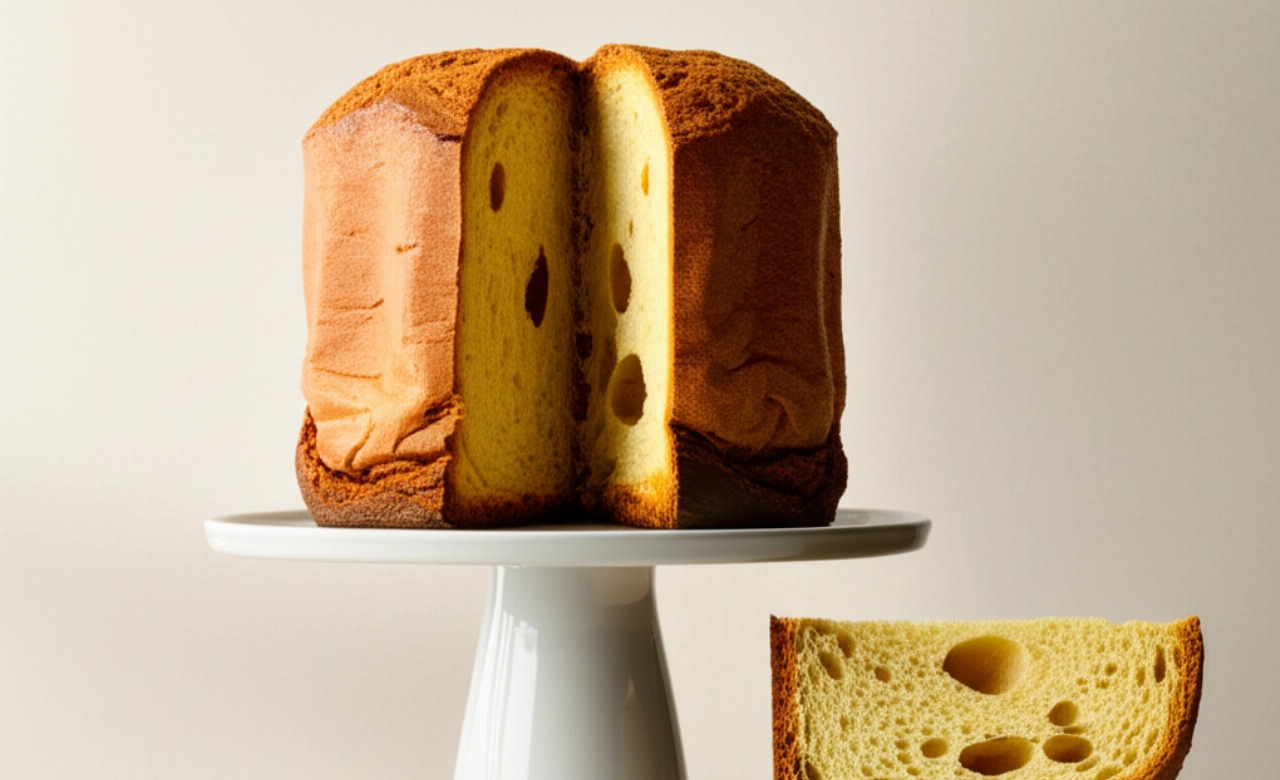
The Magic Touch: Perfect Gluten Development and Pomade Butter
The true secret to a melt-in-your-mouth Pandoro lies in two fundamental, often underestimated steps, which I reveal to you like a treasure passed down from generation to generation. The first is gluten development (incordatura): it's not just a technical term, it's the moment when the dough transforms, becoming silky, elastic, capable of holding air like a cloud. You must work the dough for a long time, patiently, until it completely detaches from the sides of the stand mixer (or your hands, if kneading by hand) and, when gently stretched, forms a transparent veil. This is the sign that the gluten is developed to the right point.
The second secret is the incorporation of butter. Don't add it all at once! The butter must be "pomade" consistency, meaning soft like a cream but not melted, and should be added little by little, in small pieces, only when the dough has already achieved good gluten development. Each piece of butter must be completely absorbed before adding the next. This slow and gradual process allows the butter to distribute evenly, making the Pandoro incredibly soft and fragrant, without weighing down the gluten network.
Let's Prepare Verona Pandoro Together: The Step-by-Step Guide
Ingredients:
- For the First Dough (Biga):
- 100g Manitoba flour
- 50ml lukewarm water
- 5g fresh brewer's yeast
- For the Second Dough:
- All the biga
- 300g Manitoba flour
- 150g sugar
- 3 large whole eggs (approx. 180g), at room temperature
- 2 large egg yolks (approx. 40g), at room temperature
- 100ml lukewarm water
- 5g fresh brewer's yeast
- 5g salt
- 1 vanilla bean (seeds) or natural extract
- Grated zest of 1 untreated lemon
- For Final Incorporation:
- 200g high-quality butter, pomade consistency (soft but not melted)
- For Dusting:
- Powdered sugar
Required Tools:
- Stand mixer with dough hook (recommended) or large bowl for kneading by hand
- 1 kg Pandoro mold
- Kitchen thermometer (optional, but useful)
- Plastic wrap
- Cooling rack
Step-by-Step Procedure:
- Prepare the Biga (First Dough): In a bowl, dissolve the yeast in 50ml of lukewarm water. Add the 100g of Manitoba flour and mix roughly until you get a coarse dough. Cover with plastic wrap and let it rise at room temperature (about 20-22°C) for 1-2 hours, or until it has doubled in volume and shows bubbles on the surface.
- Start the Second Dough: In the bowl of the stand mixer (or a large bowl), put all the risen biga. Add the 300g of Manitoba flour, sugar, lightly beaten whole eggs and yolks, vanilla seeds, and lemon zest. Begin kneading with the dough hook (or by hand) at low speed.
- Add Yeast and Water: Dissolve the 5g of fresh yeast in 100ml of lukewarm water and gradually add it to the dough, continuing to work.
- Gluten Development (Crucial Phase): Increase the speed of the mixer and work the dough for at least 15-20 minutes (or 25-30 minutes by hand). The dough must become smooth, elastic, and completely detach from the sides of the bowl, wrapping around the hook. If you pull a piece of dough, it should form a thin, transparent veil without breaking. This is the sign of perfect gluten development.
- Incorporate Salt and Pomade Butter: When the dough is well developed, add the salt and continue kneading for one minute. Now, start adding the pomade butter, one small piece at a time, waiting for each piece to be completely absorbed before adding the next. This process will take another 10-15 minutes. The dough must remain elastic and not lose its gluten development.
- First Proofing (Bulk Fermentation): Transfer the dough to a large, lightly buttered bowl. Cover with plastic wrap and let it rise in a warm place (26-28°C is ideal, like a turned-off oven with the light on) for 3-4 hours, or until it has doubled in volume.
- Shaping (Pirlatura): Once risen, gently turn the dough out onto a lightly floured surface. Gently deflate it and perform some strengthening folds (you can do a series of three-fold or book folds). Then, perform the "pirlatura": form a smooth, taut ball by rotating the dough on the work surface with cupped hands. This will give strength and a perfect shape to the Pandoro.
- Second Proofing (In the Mold): Generously butter and flour the Pandoro mold. Place the dough in the mold, with the seam facing up. Cover with plastic wrap and let it rise again in a warm place for another 3-5 hours, or until the dough has almost reached the rim of the mold. This phase is crucial for the final softness.
- Baking: Preheat the static oven to 170°C. Bake the Pandoro for about 40-50 minutes. If the surface gets too dark, cover it with a sheet of aluminum foil. Do the toothpick test: if it comes out clean, the Pandoro is baked.
- Cooling and Powdered Sugar: Remove the Pandoro from the oven and let it cool in the mold for about 10-15 minutes. Then, gently unmold it and let it cool completely on a wire rack. Only when it is completely cold, generously dust it with powdered sugar.
Tips and FAQs for Homemade Verona Pandoro
Here are some of the most common questions you might have, with answers from your trusted chef friend:
Can I use only brewer's yeast if I don't have sourdough starter?
Absolutely yes! This recipe has been designed to guarantee excellent results even with fresh brewer's yeast. Sourdough starter gives a slightly different aroma and shelf life, but the softness and fragrance will still be exceptional.
How do I know if the dough is well developed (incordato)?
The dough is well developed when it is smooth, elastic, completely detaches from the sides of the stand mixer bowl, and if you take a small piece and gently stretch it with your fingers, it forms a thin, transparent veil without breaking. It's the famous "windowpane test." Don't rush this phase!
My Pandoro didn't rise, what did I do wrong?
The most common causes are inactive yeast (check the expiration date and freshness), a too-low ambient temperature, or ingredients that are too cold. Make sure your proofing environment is warm and free of drafts, and that the yeast is well dissolved and active before using it.
Can I freeze Pandoro?
Certainly! Once baked and completely cold, you can wrap it tightly in plastic wrap and then in aluminum foil. It keeps in the freezer for a couple of months. To thaw it, leave it at room temperature for several hours or overnight. Dust with powdered sugar only when serving.
When is the best time to add powdered sugar?
Powdered sugar should only be added when the Pandoro is completely cold. If you add it when it's still warm, the moisture will make it melt, creating a sticky film. For a perfect "snow" effect, use a sugar duster or a fine-mesh sieve.
A Masterpiece of Softness and Love: Your Pandoro is Ready!
There you have it! Now you no longer just have a recipe, but all the secrets to bring a Verona Pandoro to your table that tastes of magic, celebration, and love. A masterpiece of softness and fragrance, made with your own hands, which will be the undisputed star of your celebrations.
Don't be afraid to experiment. Every Pandoro is a journey, and yours will be unique. But start from this solid base, and you'll see that applause will not be lacking. Cooking is a gesture of love, and Pandoro is its sweetest embrace.
Have you tried our recipe? We're curious to see your masterpiece! Leave a comment below, tell us how it went, or share a photo on Instagram tagging @CercaRicette.it. If you loved this Pandoro, you can't miss our recipe for Traditional Panettone or another Christmas delight like Neapolitan Struffoli.
